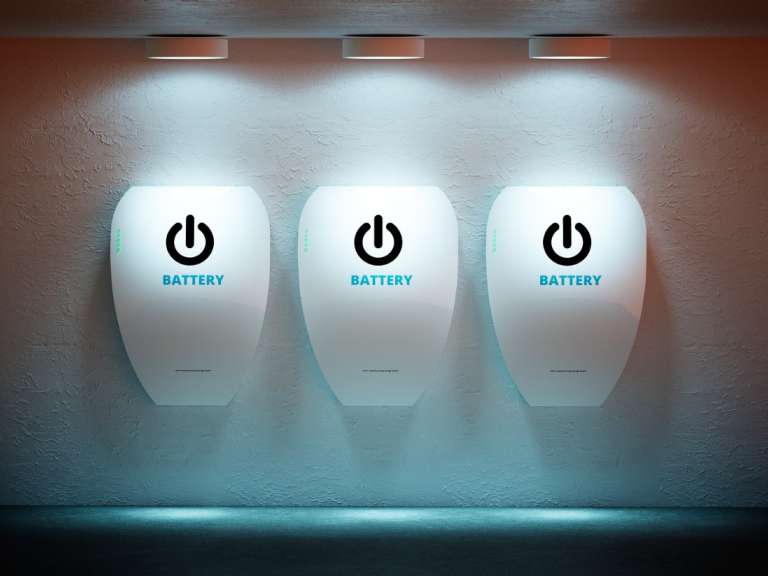A Wealth of Storage: Greater Deployment Starts With Investment
Peter Kelly-DetwilerFor storage to truly proliferate, it's going to require a lot of third-party financing. Here's a look at where the money will come from and when.

The global energy storage industry is growing rapidly across the globe. More opportunities are emerging, even as battery costs are falling rapidly. According to Bloomberg New Energy Finance, lithium-ion battery-pack costs declined by 24 percent in 2017. Bloomberg forecasts that this industry will grow rapidly, to 125,000 MW—worth $103 billion—by 2030.
The United States is promising to be one of the stronger locations, with GTM Research and the Energy Storage Association forecasting up to 2,500 MW of storage by 2022, at a value exceeding $3 billion. The organizations expect approximately half of that capacity to be utility-scale, with the remainder located behind the meter.
However, that type of growth—both in the US and globally—won't occur without a massive infusion of financing. While various use cases across the planet demonstrate that storage is now viable and broadly acceptable, it's going to take a lot more money to achieve a true transformation.
Third-party financing will have to enter the global game in much the same way it supported the solar industry, providing billions of dollars in liquidity and financing as much as 70 percent of US on-site solar at its peak.
Financing solutions for storage will vary to some degree by region, as well as by whether the storage deployment is utility-scale or behind the customer meter. For utility-scale deployments, financing will often be less complicated for two major reasons:
By contrast, behind-the-meter applications are an entirely different creature. Creditworthiness must be assessed on a customer-by-customer basis—a time-consuming proposition that defies economies of scale. In addition, the economics of onsite deployments are often not as straightforward. In most cases, batteries must create multiple value streams, which is known as value stacking. However, this issue will decline in importance as the price of storage drops.
These financial flows generally also include management of monthly utility demand charges and wholesale system demand (capacity) charges, according to Renewable Energy World. In regions like California, these onsite storage systems may also be aggregated and utilized by the utility, as well as on a system-wide basis.
While utility-scale deployments are often easier to finance, some issues must still be resolved. These include establishing how multiple aspects of storage are recognized, integrated into markets, and compensated. In the US, this uncertainty exists at both the federal and state levels.
The Federal Energy Regulatory Commission (FERC) issued a Notice of Public Rulemaking in November 2016 to amend its regulations "to remove barriers to the participation of electric storage resources . . . in the capacity, energy, and ancillary service markets operated by regional transmission organizations (RTO) and independent system operators (ISO) (organized wholesale electric markets)." This proceeding has advanced slowly, but it is expected to be reinvigorated in 2018.
In California, arguably the most advanced storage area in the world, regulators are still grappling with how to recognize and compensate storage for all of the potential "multiple use" services it provides.
The good news is that regulators are beginning to recognize these issues and complexities, and have developed plans to address them. Once that occurs, investors will have a much clearer sense of project economics. This uncertainty is not confined to the US, either. Other countries, such as Australia, are grappling with similar issues.
For utility-scale funding, project financing will show up, just as it has for conventional assets, aided by utility RFPs (requests for proposal) and well-funded developers.
By contrast, commercial project financing is only getting started (while residential storage remains almost nonexistent). The amount of available capital has increased somewhat—the latest estimates from GTM show US project financing jumping from nearly nothing in 2015 to $796 in 2016, and reaching almost that level again by May of 2017. However, the cost of financing is still expensive.
GTM indicated that today's investors needed to see returns between high single digits and the low 20-percent range, a cripplingly high fee. This cost can sometimes be cut where contracted revenue streams—such as utility payments and a guaranteed reduction in demand charges—are assured.
As the industry matures, several developments should increase investor confidence. Costs of energy storage will likely continue to fall at double-digit rates, as large numbers of factories are built and supply chain efficiencies continue to push costs down. Meanwhile, regulators will provide further clarity concerning the rules for market participation and compensation. Finally, more use cases will proliferate, providing additional investor confidence.
As all of these factors come into play, perceived risks will fall, allowing investors to bring more money into the industry at more affordable rates. This, in turn, will likely result in more projects and the creation of a virtuous cycle similar to that of solar and wind energy.
Once that happens, the energy storage industry will truly take off—with significant implications for global power grids.
The role of the utility customer is changing, from ratepayer to supplier, storer, and balancer of the electrical load. As customers embrace distributed energy resources, utilities need to consider new positioning and pricing to maintain their viability.
The global LNG trade is picking up steam in 2018, changing the nature of power systems around the world. Asia is a big buyer, and the US is emerging as a big seller.
Global energy storage markets are about to pop. Use cases are proliferating in multiple countries, demonstrating the value of energy storage for numerous applications on both sides of the meter.